Aw, poor sugar. While many foodstuffs bounce back and forth between the media’s nutritional “good books” and “bad books”, sugar has never had its moment to shine. It’s pretty much one of the only foods I can think of that’s uncontroversial because most health professionals- doctors, dietitians, nutritionists- agree it’s not the best (and agreeing is not exactly the norm). The message isn’t new- it’s been fairly well appreciated (albeit maybe somewhat ignored or downplayed) since long before we knew that smoking was bad, that breast feeding was best, or that seatbelts save lives. But what has changed is our appreciation for just how problematic a diet high in added sugars can be- a concern that has sparked a lot of debate about how much is just too much.
While Canada still hasn’t issued any specific recommendations on added sugar (or even total sugars, for that matter) we are hopefully at a place where that might change. Currently, Health Canada is working on updating the Nutrition Label to include an extra line under Total Sugars for Added Sugars. What exactly is the difference? Added Sugars (also known as “Free” Sugars) are defined as any sweeteners added to the product by a manufacturer and can be identified in an ingredient list by words ending in –ose (sucrose, lactose, maltose, dextrose, fructose etc.), any syrups (corn, malt, maple etc.), molasses, sugar, brown sugar, honey, agave, nectars, and concentrated fruit juice. In contrast, Total Sugars would include all of the added sweeteners, but also naturally occurring sugars from dairy products, fruit, and vegetables. While it’s probably not a good idea to go on a crazy-high total-sugar diet and consume nothing but ripe sugar-rich bananas (like this girl), I ultimately would focus on limiting the added sugars rather than your total. And that’s exactly what the new proposed nutrition label is supposed to help you do. It may also lead the way to a more concrete recommendation on intakes, but until then, there are trustworthy experts to look to for advise. The World Health Organization (WHO), for example, suggests you get your added sugars down to no more than 10% of your daily caloric intake – with the goal to be below 5%. For the average woman on a 2000 calorie diet, that’s between 25-50 grams per day, while the average man consuming 2800 calories should aim for between 35-70 grams.
To help you put this in perspective, especially until changes to our food label makes it easier to track added sugars, I wanted to create a pictorial representation of how much added sugar is in common foods- many of which you probably had no idea had that much- or even any- added sugar. Sure, you are probably well aware of the sugar you add when you pour your morning coffee, but I bet you’ve never visualized putting white sugar in your yogurt or on your breakfast cereal. Just four grams of added sugar in a product is equal to one standard cube of white sugar, so keep this visual in mind as you walk through your own daily eating routine and roughly see how quickly you can meet your quota.
Women’s Ideal Added Sugar Target (5% of a 2000 calorie diet)
25 grams = 6 cubes
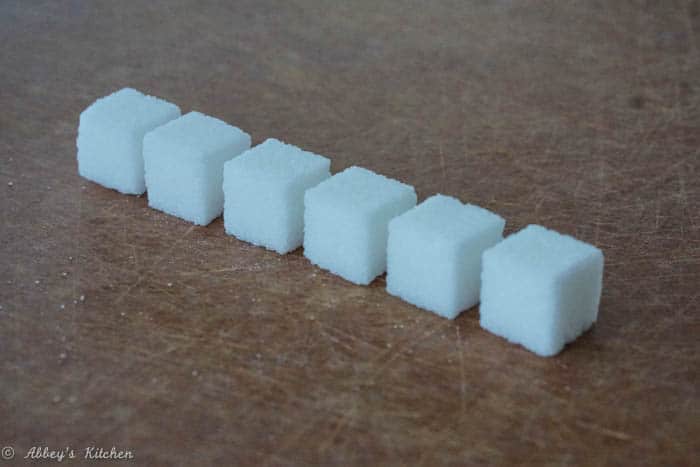
Men’s Ideal Added Sugar Target (5% of a 2800 calorie diet)
35 grams = 9 cubes
Iced Tea (500 ml bottle) = 43 g
11 sugar cubes
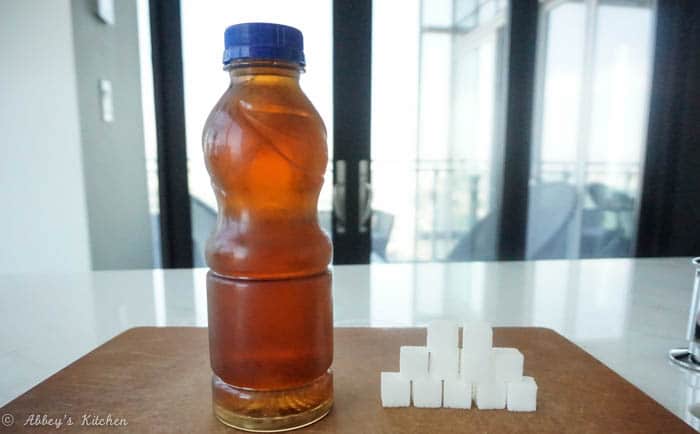
Sugary Corn Flaked Cereal (30 g, 3/4 cup)= 9 g
2 sugar cubes
Maple Syrup (2 tbsp) = 24 g
6 sugar cubes
Chocolate Milk (1 cup) = 12 g
3 sugar cubes
Strawberry Jam (1 tbsp) = 12 g
3 sugar cubes
Maple Brown Sugar Flavoured Pack of Instant Oatmeal = 14 g
3.5 sugar cubes
Sweetened Dried Cranberries (1/4 c) = 10 g
2.5 sugar cubes
Chocolate pudding (100 g cup) = 15 g
4 sugar cubes
Chocolate Ice Cream (1/2 cup) = 16 g
4 sugar cubes
Granola Bar = 13 g
3 sugar cubes
Fat Free Strawberry Yogurt (175 g cup) = 14 g
3.5 sugar cubes
Fruit Syrup Packed in Light Syrup (1/2 cup) = 12 g
3 sugar cubes
Pecan Caramel Chocolates (2 pieces) = 14 g
3.5 sugar cubes
Fruit Cream Cookies (2 cookies) = 10 g
2.5 sugar cubes
Chocolate Cake with Frosting (100g, or 1/6th of a 6” round cake)= 48 g
12 sugar cubes
Specialty Caramel Creamy Coffee Drink (16 oz) = 57 g
14 sugar cubes
Whole Grain Blueberry Muffin = 20 g
5 sugar cubes
Store bought Coleslaw (1/2 c) = 17.5 g
4.5 sugar cubes
BBQ Sauce (2 tbsp) = 12 g
3 sugar cubes
Chocolate Hazelnut Spread (1 tbsp) = 11 g
3 sugar cubes
Candy (9 pieces) = 29 g
7 sugar cubes
Which food products’ added sugar content are you most shocked about? What do you think you’ll be most able to cut back on to meet your Added Sugar goals?

Abbey Sharp is a Registered Dietitian (RD), regulated by the Ontario College of Dietitians. She is a mom, YouTuber, Blogger, award winning cookbook author, media coach specializing in food and nutrition influencers, and a frequent contributor to national publications like Healthline and on national broadcast TV shows.
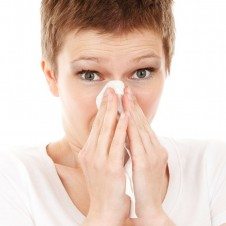

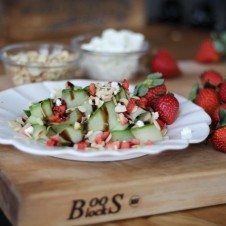
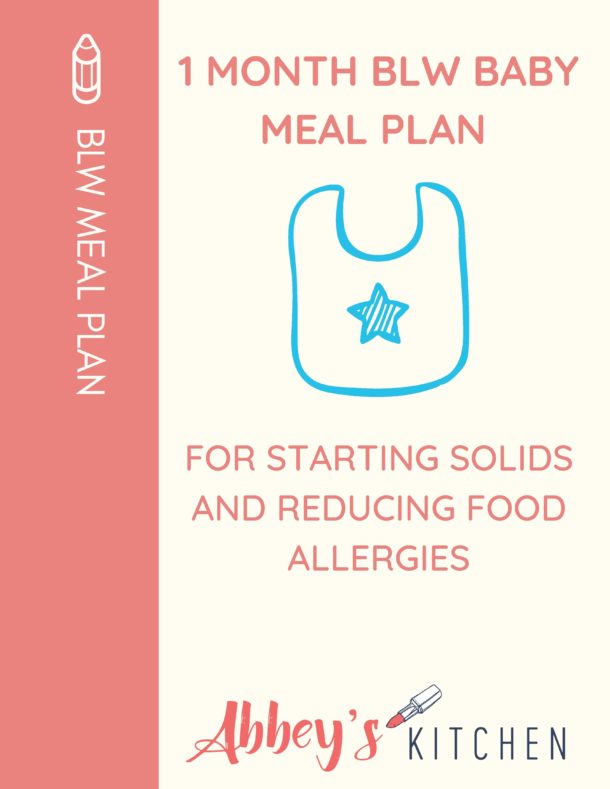
Lillie says
Thanks!!!
Abbey Sharp says
🙂
D. Ramnarine says
Wow, that’s quite an eye opener and scary at the same time.